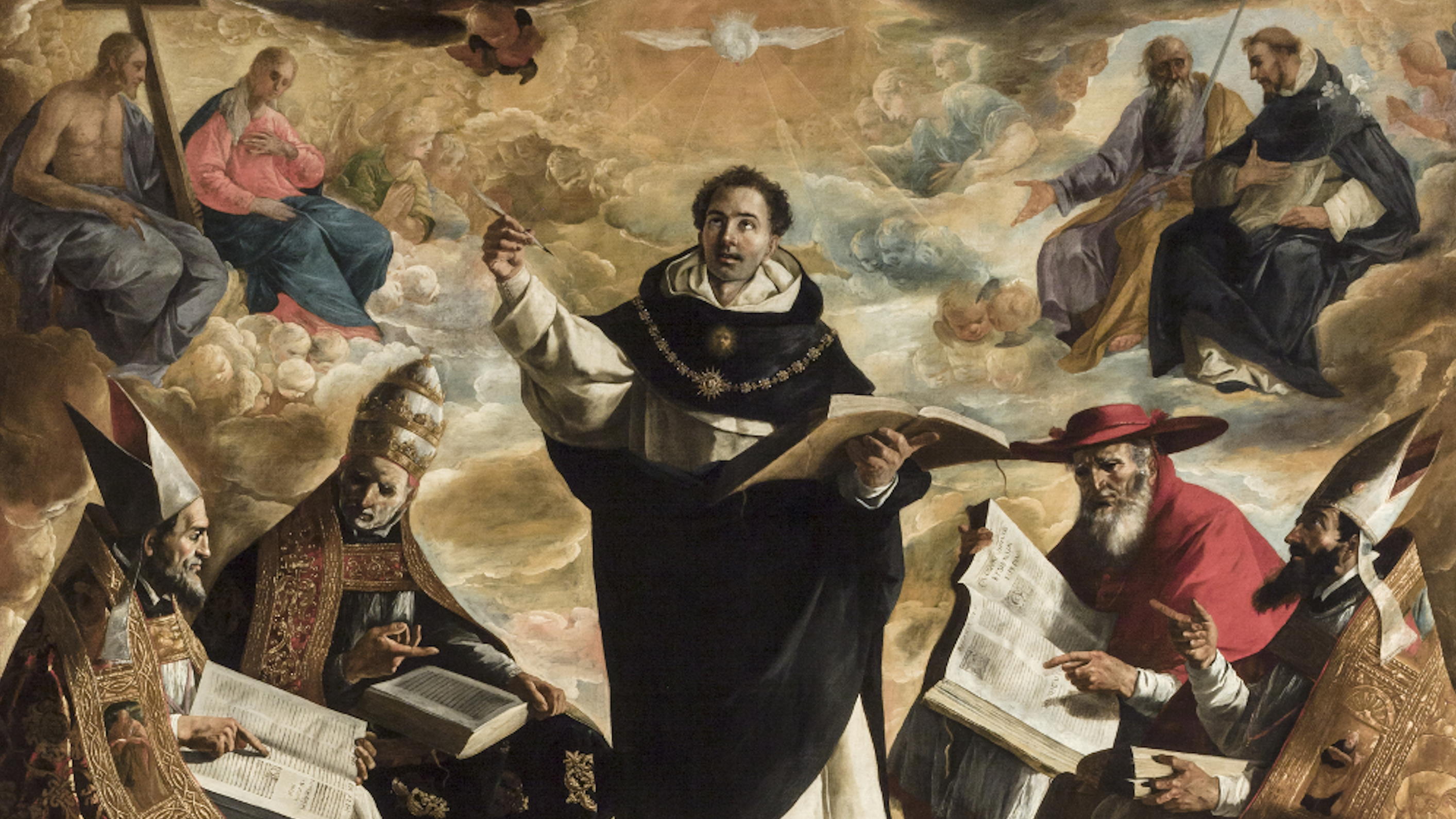The following text is the transcript of our Youtube video Where Did The Bible Come From?.
This video is part of a series on “The Sources of Faith”. You can find all the videos in the series here.
Welcome to Catholic Hub! I’m David, and in today’s video I’m going to talk about the languages and versions of the Bible.
The Bible Wasn’t Always Easy To Get
Most people who own a Bible nowadays have a modern printed and bound edition in book form, with the text translated in their native language.
But in fact, the Bible didn’t always exist in this practical form and for over a thousand years, it was actually copied by hand with painstaking care and preciously guarded as a treasure by the individual or community to which it belonged.
But before we go further into these manuscripts and copies, let’s talk about the original languages of the Bible.
The Languages of the Bible
Hebrew, Aramaic, Greek
The books of the Bible were originally written in Hebrew, Greek, and Aramaic.
Hebrew is a Semitic (from Sem, a son of Noah) language spoken by the original inhabitants of Canaan and transmitted by them to Abraham and his descendants.
Aramaic is another branch of Semitic and was spoken in Babylonia, Mesopotamia, Syria, and the neighbouring countries. It is also called Syriac. The Jews learned Aramaic during their captivity in Babylon in the sixth century before Christ.
Hebrew was gradually superseded by Aramaic in Palestine, and from the third century before Christ, it was a dead language, used only in the Jewish liturgy.
Our Blessed Lord spoke Aramaic during His earthly life. And there are a few Aramaic words and expressions mentioned in the Gospels, for example, talitha cumi, kepha, ephetha.
The Greek is not the same as Greek spoken in Greece today, but a Greek dialect spoken and written throughout the greater part of the civilized world from the end of the fourth century before Christ till the sixth century after Christ. It is also called Hellenistic or Koine Greek, and the Jews who used it were known as Hellenists.
Which Books Were Written In Each Language?
So which books were written in each language?
Well, nearly all the books of the Old Testament were written in Hebrew.
Tobias, Judith, the Gospel of St. Matthew and portions of the books of Daniel, Esther and the first book of Esdras were written in Aramaic.
The book of Wisdom, the second book of Machabees, and all of the New Testament, excepting Matthew, were written in Greek.
No autographs (that is, originals written by the hands of the inspired writers) of any of the books of Scripture have come down to us. This is due partly to the perishable material used by the authors, and partly to the fact that the Roman emperors decreed the destruction of the Sacred Books of the Christians. This was enacted by the Edicts of Decius, in 250 AD and Diocletian, in 303 AD.
Manuscripts of the Bible
However, we do possess very ancient copies of all the books of the Bible. These copies are called Biblical Manuscripts since they were written by hand. Such manuscripts, if written on parchment in capital letters and bound in book form, are called codices.
The oldest Hebrew manuscript of the Bible dates from the tenth century. The oldest Greek manuscript was written in the fourth century. It is preserved in the Vatican Library.
The Most Important Translations of the Bible
The Greek Septuagint and the Latin Vulgate
The books of the Old Testament were translated into Greek long before the time of Christ, and those of the New Testament from the original Greek into Latin, Syriac, and other languages no later than the second century after Christ. The two most important translations are the Greek Septuagint and the Latin Vulgate.
The Septuagint translation was made in the third century before Christ to meet the religious needs of the Greek-speaking Jews of Alexandria in Egypt. About the year 290 B.C., the five books of Moses were translated into Greek, as the legend has it, by seventy learned Jews from Jerusalem, whence came the name Septuagint, that is, “the work of the Seventy” from the Latin septuaginta.
Through the Septuagint translation, the Greek-speaking pagans obtained a knowledge of divine revelation and were thus prepared for the preaching of the Gospel. The Apostles made use of the Septuagint in their preaching and writing, thus consecrating it, as it were, for all time.
The Vulgate is the most famous Latin translation of the Bible. It is almost exclusively the work of St. Jerome, who undertook it at the request of Pope Damasus who reigned from the year 366 to 384.
The translation of St. Jerome became, by degrees, the only Latin version used in the Western Church, and for this reason, it was known as the Vulgate, from the Latin word vulgata, which means “widely circulated” or “in common use.” The Council of Trent declared the Vulgate to be the authentic Latin version, and the one to be used in public in the Western Church.
If you want to learn more about the versions of the Bible, I highly recommend reading the Catholic Encyclopedia article on this topic, which goes into much more detail than I’ve covered here.
The Douay-Rheims Bible
The most well-known English Catholic translation of the Scriptures is known as the Douay or Douay-Rheims Version because it was prepared at the English College of Douay in France. The New Testament was published at Rheims in 1582, and the Old Testament at Douay in 1609.
Several revisions of the Douay-Rheims Bible have appeared, the best being that of Bishop Challoner in 1750. And if you don’t have your own copy of the Douay-Rheims, you can easily read it online at drbo.org.
Protestant Bibles
The English Protestant translation of the Bible most widely used is the so-called “Authorized Version” of 1611. It was dedicated to King James I and is on that account known as the “King James Version”. A revised version was published in 1885.
As mentioned in the last video, Protestant Bibles omit certain books from the Sacred Canon, but over and above that, they often have a different translation to the Latin Vulgate or the Douay-Rheims. This was especially evident in the case of Luther’s Bible which he published in 1522.
In the words of the Catholic Encylopedia:
His renderings were often excessively free and at times he arbitrarily changed the sense of the original.
The most famous example of this is in Romans 3:28, where Luther added the word “allein” (alone) to the phrase “justified by faith,” resulting in the famous phrase “allein durch den Glauben” - “justified by faith alone”.
But just as important as the translation itself is the correct interpretation of the words of Holy Scripture - which will be the topic of our next episode in this video series on the Sources of Faith.
That’s all for today! I hope you enjoyed this video, and if so, please do give it a thumbs up and a comment. Please don’t forget to subscribe if you haven’t already; it really, really helps the channel to grow.
Also I’d like to give a massive thank you to all my current subscribers - you are absolutely amazing and I hugely appreciate your support! Thanks for watching, and I’ll see you in the next one.





Comments